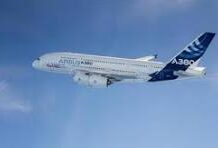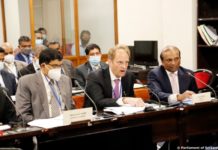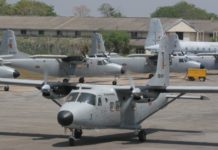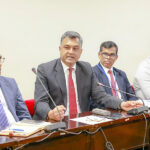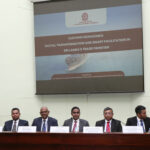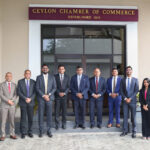Compiled by: Gp Capt Kumar Kirinde, SLAF (Retd)
2002
Civil Aviation Authority of Sri Lanka was established.
Drafting of the Technical Law proceeded. Expo Air leased three Fokker F27 Friendship aircraft from Oman Aviation Services. Lionair, which had suspended domestic services in 1998, resumed operations in October.
2003
BIA (Bandaranaike International Airport) Phase II Development Project was commenced.
The Sri Lanka Balloon Festival was launched in March, only a year after hot air ballooning was introduced in Sri Lanka. The event attracted experienced balloonists from the United Kingdom, France, USA, Austria and Switzerland. It was the first such international aviation event in the country.
SriLankan Airlines conducted survey flights in preparation for launching SriLankan Air Taxi
amphibious floatplane services from Colombo to the following destinations: Bentota, Galle,
Koggala, Weerawila, Ampara, Kandy, Nuwara Eliya, Hingurakgoda, Anuradhapura, and
Trincomalee. Revenue flights commenced using a Cessna 208 Caravan leased from Bon Air/Marin Air in Turkey. Later, the Caravan was replaced by single-engine De Havilland Canada DHC-3 Turbo Otters, registered 4R-ARA & 4R-ARB, leased from Canadian operator Kenn Borek Air.
2004
Deccan Aviation Lanka was incorporated in July as Sri Lanka’s premier private helicopter
operator. The partnership between Deccan Aviation India and the Favourite Group of Sri Lanka was hailed as “a new era in private aviation” Expo Air launched cabin crew training.
Aero Lanka introduced a HS (Avro) 748, 4R-SER, on scheduled services between Ratmalana, Trincomalee (China Bay) and Jaffna (KKS/Palaly). At the time Aero Lanka was also operating a Boeing 727-223F (4R-SEM) on cargo services, based in Malaysia.
(Also see Annexure below: ‘Darting to the Top of Sri Lanka’)
2005
On August 4 Sri Lanka and Singapore signed an ‘Open Skies’ agreement, removing all restrictions on passenger and cargo services. Under the terms of the agreement, airlines were permitted to operate on any route between Sri Lanka and Singapore and beyond, with no limits on frequency. Expo Air applied to the Civil Aviation Authority of Sri Lanka (CAASL) to operate international air cargo services to Malé, Mumbai, Tiruchirapalli, Thiruvananthapuram, Hyderabad, Vizag, Kochi, Bangalore, Chennai, Islamabad, Lahore, Karachi, Kathmandu, Chittagong, Dhaka, Bangkok, Kuala Lumpur, Singapore, Jakarta, Manila, Dubai, Abu Dhabi, Sharjah, Muscat, Jeddah, Beirut, and Cairo, as well as various cities in Australia, Africa, and Europe. The carrier proposed to use Airbus A320 aircraft on short-haul routes, while Airbus A330 and A340 would service long-haul routes.
Lionair applied to the Civil Aviation Authority of Sri Lanka to operate services to the following destinations: Athens, Chennai, Kochi, Denpasar, Dhaka, Dubai, Guangzhou, Jakarta, Kuala Lumpur, Kuwait, London, Malé, Melbourne, Mumbai, Rome, Singapore, Sydney, Tiruchirapalli, Thiruvananthapuram and Zürich, using Avro 748 and Airbus A320 aircraft.
2006
Civil Aviation Bill was gazetted. The Sri Lankan government laid the foundation stone for a new airport to be built at Weerawila, in the Southern Province. Deccan Aviation, which operates the Indian low-cost carrier Air Deccan, started international operations out of Sri Lanka. Expo Air added a Douglas DC-8-63CF freighter to its fleet.
2007
Budget airline Mihin Air was established by the Sri Lankan government to operate regional
services to India and the Middle East. On March 25 at 0045 the LTTE launched an air attack on the Sri Lanka Air Force base at Katunayake adjoining the international airport. Three Air Force personnel were killed and 16 injured when light aircraft dropped two bombs, but no aircraft on ground were damaged. Passengers already on commercial aircraft were disembarked and led to safety, while others trying to reach the airport were turned away and approach roads closed. The airport was temporarily shut down following the incident, but flights resumed at 0330.
2009
When the EIA (Environmental Impact Assessment), which was conducted by Central Environment Authority, found the location to be unsuitable, the proposed Weerawila International Airport was shifted to Mattala. In year 2009, His Excellency the President Mahinda Rajapaksa laid the foundation stone for the Hambantota International Airport (HIA) at Mattala.
On February 20 the air wing of the LTTE launched a suicide attack against military locations in and around Colombo, using two Zlin Z 143 light aircraft packed with explosives. The attackers failed to reach their presumed targets (one of which was Katunayake Airport), having been shot down by ground-based anti-aircraft fire. However, one of the aircraft struck a government building in Colombo, killing two people, while more than 50 others were injured in both crashes.
2010
As part of the airport development program, a passenger train service was launched between Katunayake and Colombo Secretariat Station. Also in June plans were unveiled to extend the Colombo-Katunayake airport express train to Ratmalana.
SriLankan Air Taxi services , which had been suspended a few years earlier, were revived using two De Havilland Canada DHC-6 Twin Otter floatplanes leased from Kenn Borek
Air (Canada) in 2010.
Courtesy: References:
http://www.ft.lk/article/144643/A-century-of-aviation-in-Sri-Lanka
http://civilaviationsl.weebly.com/sri-lankan-aviation-history.html
http://www.ft.lk/FT-Lite/101-years-of-aviation-in-sri-lanka/6-228346
http://www.dailynews.lk/2020/12/08/features/235519/soaring-towards-safer-skies
https://en.wikipedia.org/wiki/SriLankan_Airlines#Air_Lanka
https://en.wikipedia.org/wiki/FitsAir
(N.B. Some of the above references may contain inaccurately excerpted and unattributed extracts from
newspaper articles researched and written by Roger Thiedeman and Capt. Gihan A. ‘GAF’ Fernando.
The compiler has obtained corrected versions of the inaccuracies for inclusion in the following text.)




